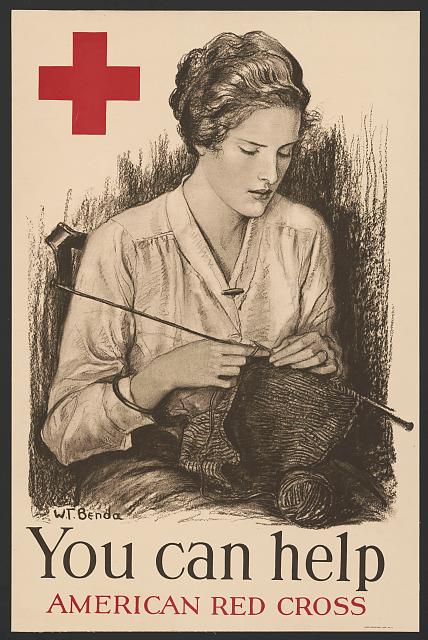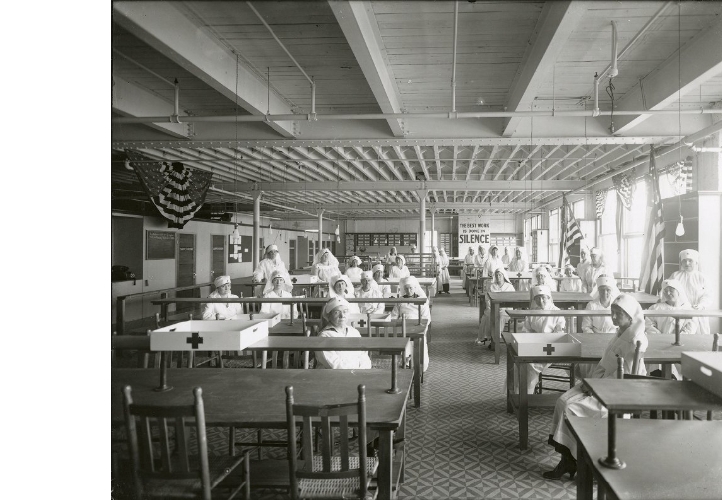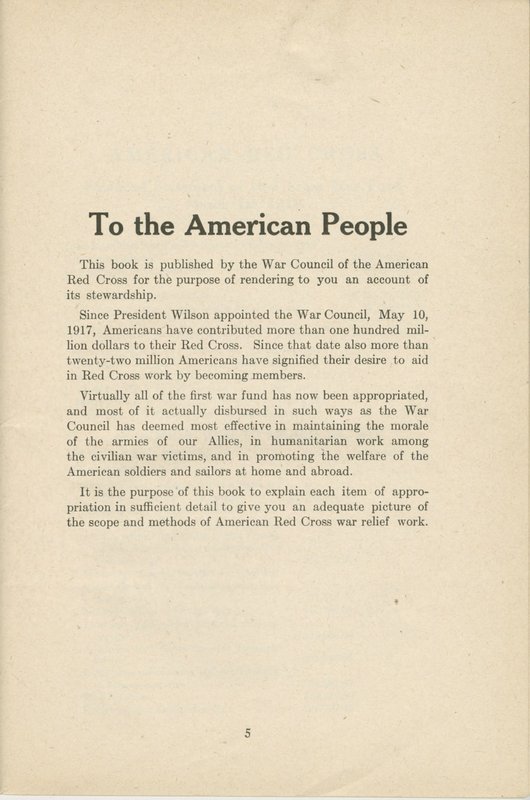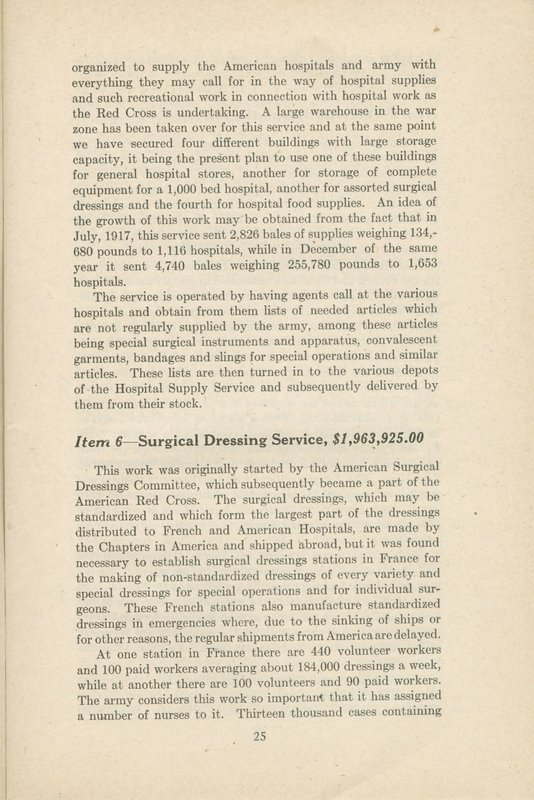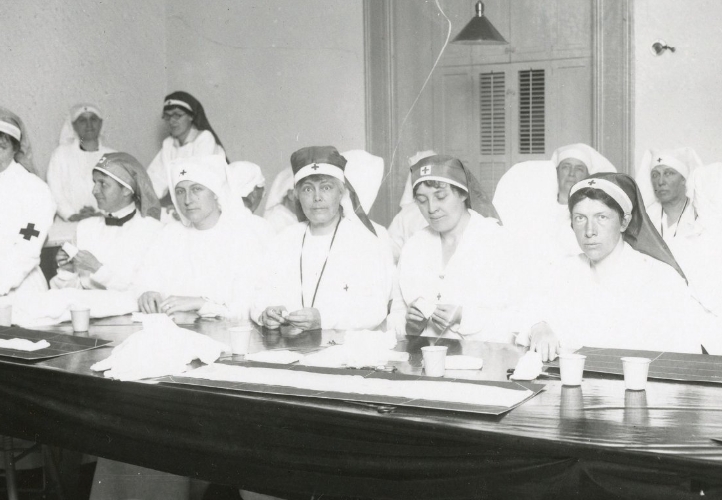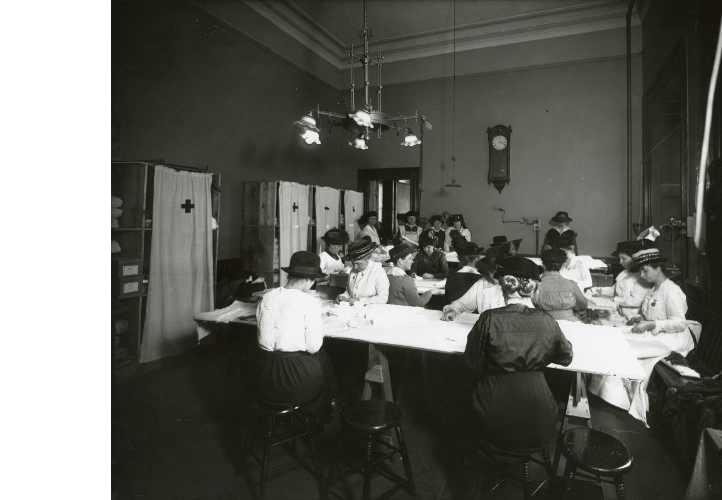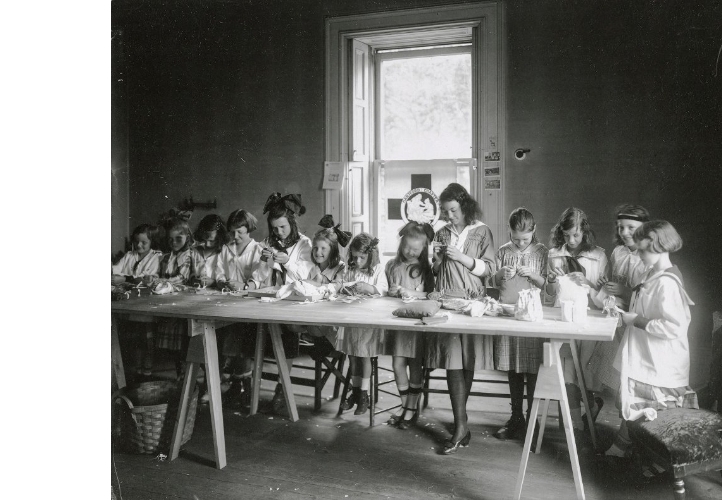Women making and folding surgical "Dressing" in WWI
Under the supervison of the American Red Cross, Red Cross workers began to systematically produce surgical dressing in large quantites for the wounded to be packaged and sent abroad.
On April 28, 1918 the new Red Cross Surgical Dressing Headquarters opened in Hartford with speeches and accolades for those responsible for the space design and construction. The new headquarters was a state of the art facility planned and drawn up by a woman, Mrs.E. K. Root, a member of the Board of Dirctors of the Red Cross. She visited the top surgical dressing headquarters in major New England cities such as New York ad Springfield. She took those ideas and integrated the newest technology in surgical dressing tools and manufacture to design and draw up plans for the new space in Hartford. The new headquarters located on the eighth floor of the Wise, Smith& Co. building in Hartford. The company donated the space for the duration of the war. The newly opened surgical dressing headquarters was proclaimed to be the best in the nation at the time. Mrs. Root, the architect, was credited by her fellow committee member, John T. Robinson for the successful completion of the "glorified factory" and in record time of three weeks for construciton.
Hartford Courant, April 28, 1918
Before the speeches began at the opening of the Red Cross Surgical Dressing Headquarters the workers demonstrated the new modern machines used to cut, stretch and reel the gauze for surgical dressings. The newly designed reels were the first of their kind in the New England area and promised to be much more efficient in the stretching the gauze for dressings. The new equipment along with the streamlined organization of the women working in the efficiently designed space would increase production achieving the goals of the American Red Cross war effort.
Adult and Junior Red Cross workers in the Red Cross
Efforts continued to make surgical dresssings in Hartford until in August of 1918 when the American Rd Cross had a surplus of surgical dressings. At that time point the Hartford Courant published an article for women to stop making surgical dressings at home and as a community. Instead they asked women and girls to make a greater effort to make garments for both the soldiers in hospitals the hospitals and for the refugees. They asked for comfort kits for both the army and navy. Additionally, they requested that four times as many socks be produced for soldiers in the trenches.
